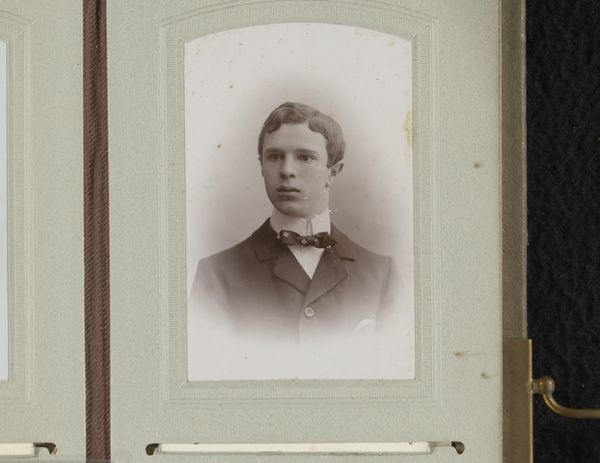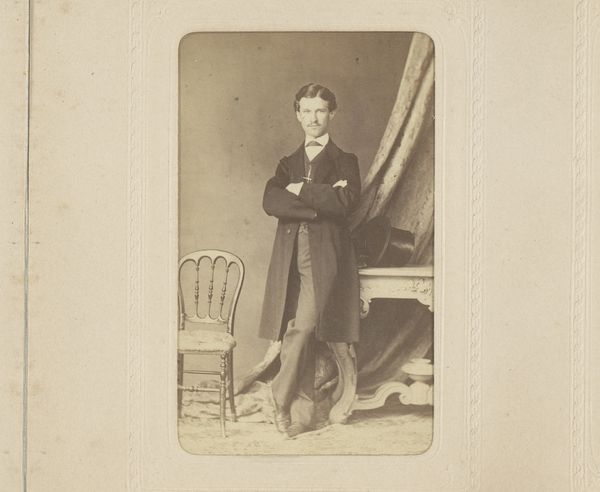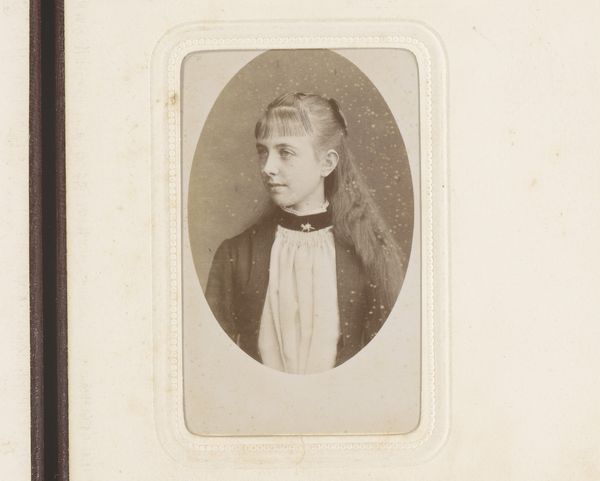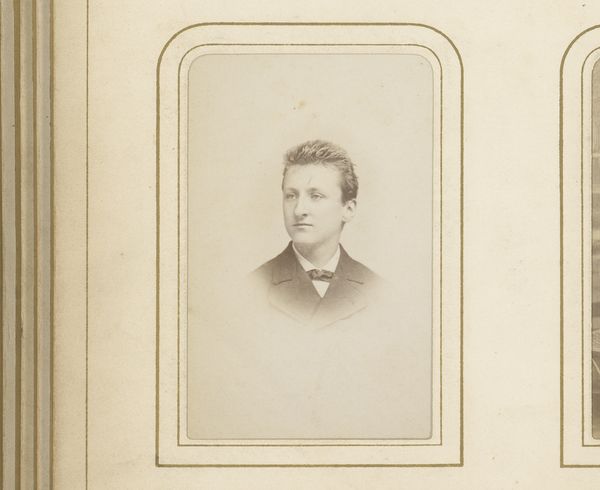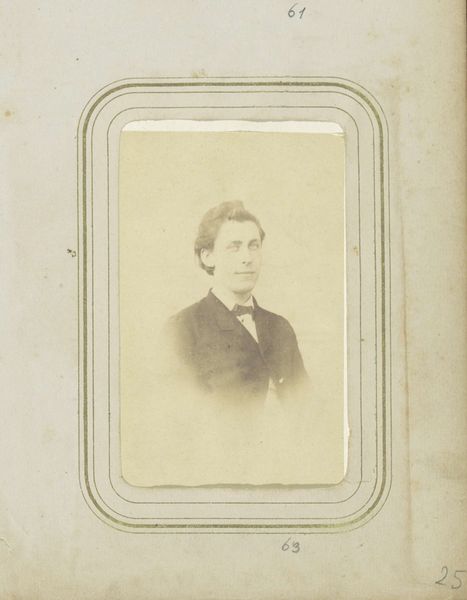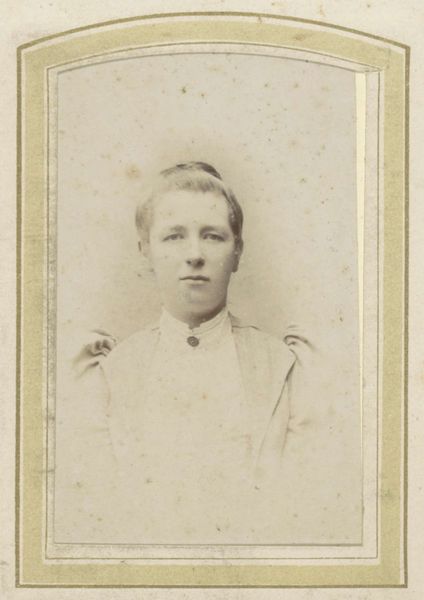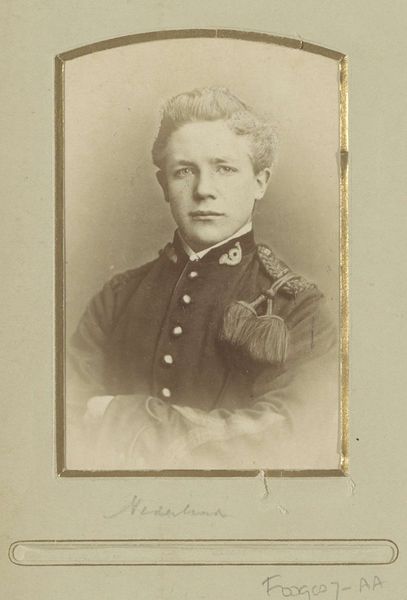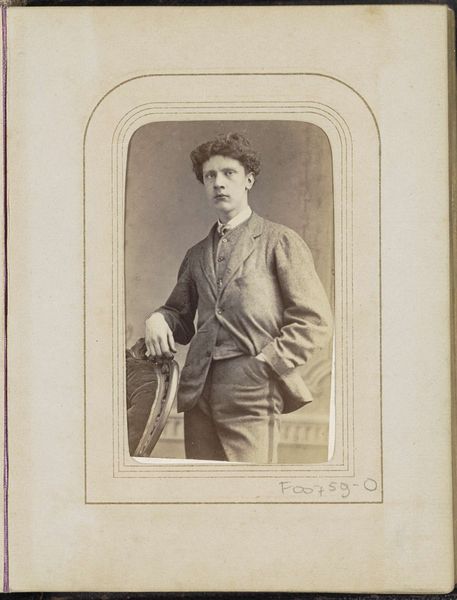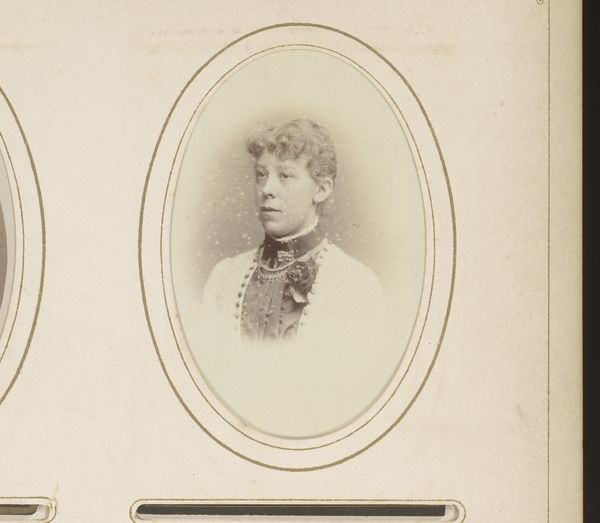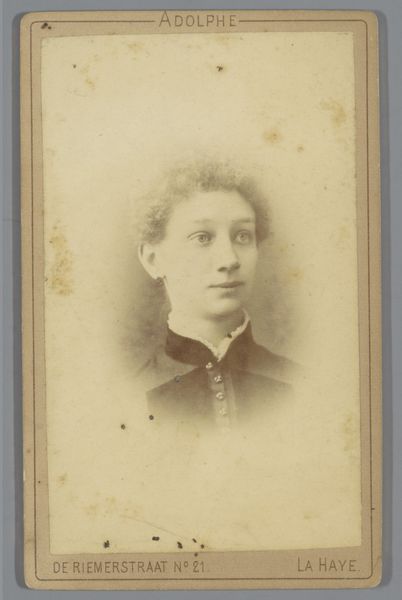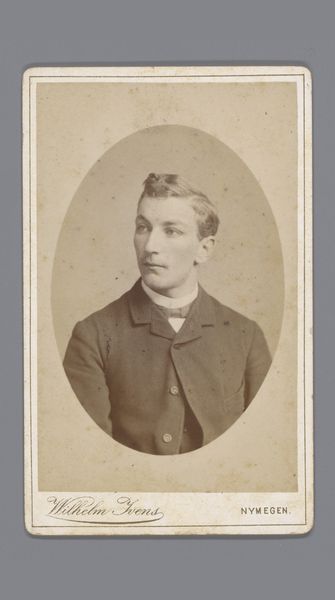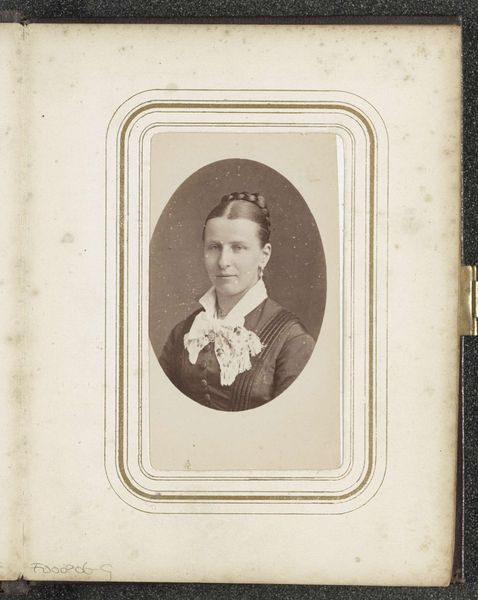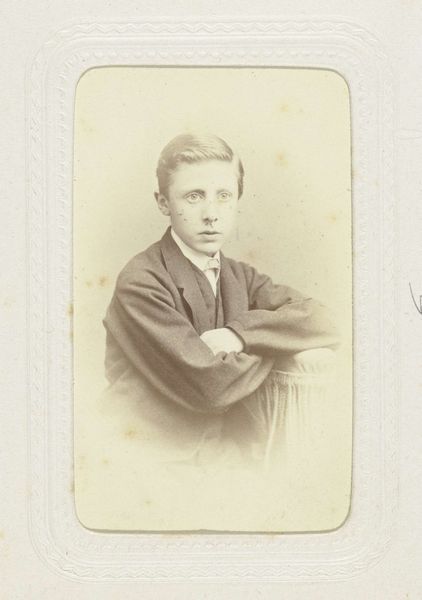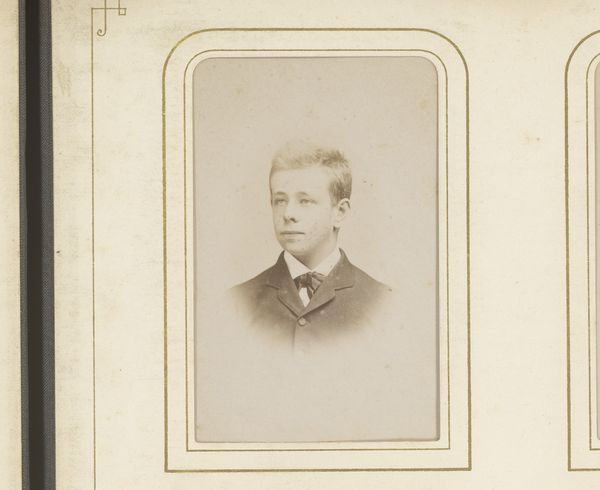
Portret van een (vermoedelijk) Nederlandse matroos, zittend met onderscheidingen c. 1879 - 1883
0:00
0:00
photography
#
charcoal drawing
#
photography
#
history-painting
#
realism
Dimensions: height 102 mm, width 63 mm
Copyright: Rijks Museum: Open Domain
Editor: So, this is a portrait of a sailor from the late 19th century, around 1880, possibly Dutch, by Adolphe Zimmermans. It’s a photograph. I find it a bit… faded, almost ghostlike. What stands out to you in this piece? Curator: Immediately, I notice how the artist captured the sailor’s medals. They signify honor, valor, service to the nation. Consider how important those symbols were at a time of colonial expansion and burgeoning nationalism. Editor: That's interesting. I hadn't thought about the nationalistic angle. It makes you wonder what stories those medals could tell. Curator: Precisely! The medals offer a cultural narrative. Furthermore, the striped shirt itself has become a symbol loaded with meanings. It once strictly defined sailors, identifying them as maritime individuals; how is it perceived now? What kind of connotations does it trigger? Editor: Good point. It makes me think of childhood, and holidays at the beach. Is that continuity something that you always see in older artworks? Curator: Visual symbols often demonstrate a profound continuity in cultural memory. Artists both consciously and unconsciously use them to speak to universal human experiences and collective identities. This connects the past with our present understandings. Do you think it challenges our interpretation of history at all? Editor: I guess it shows history is never really "past", it's all part of how we see the world now. Thanks, I’m definitely seeing more than just a faded photograph now. Curator: Indeed! By engaging with visual language, we perceive how our current realities are shaped by images embedded within cultural memory.
Comments
No comments
Be the first to comment and join the conversation on the ultimate creative platform.
